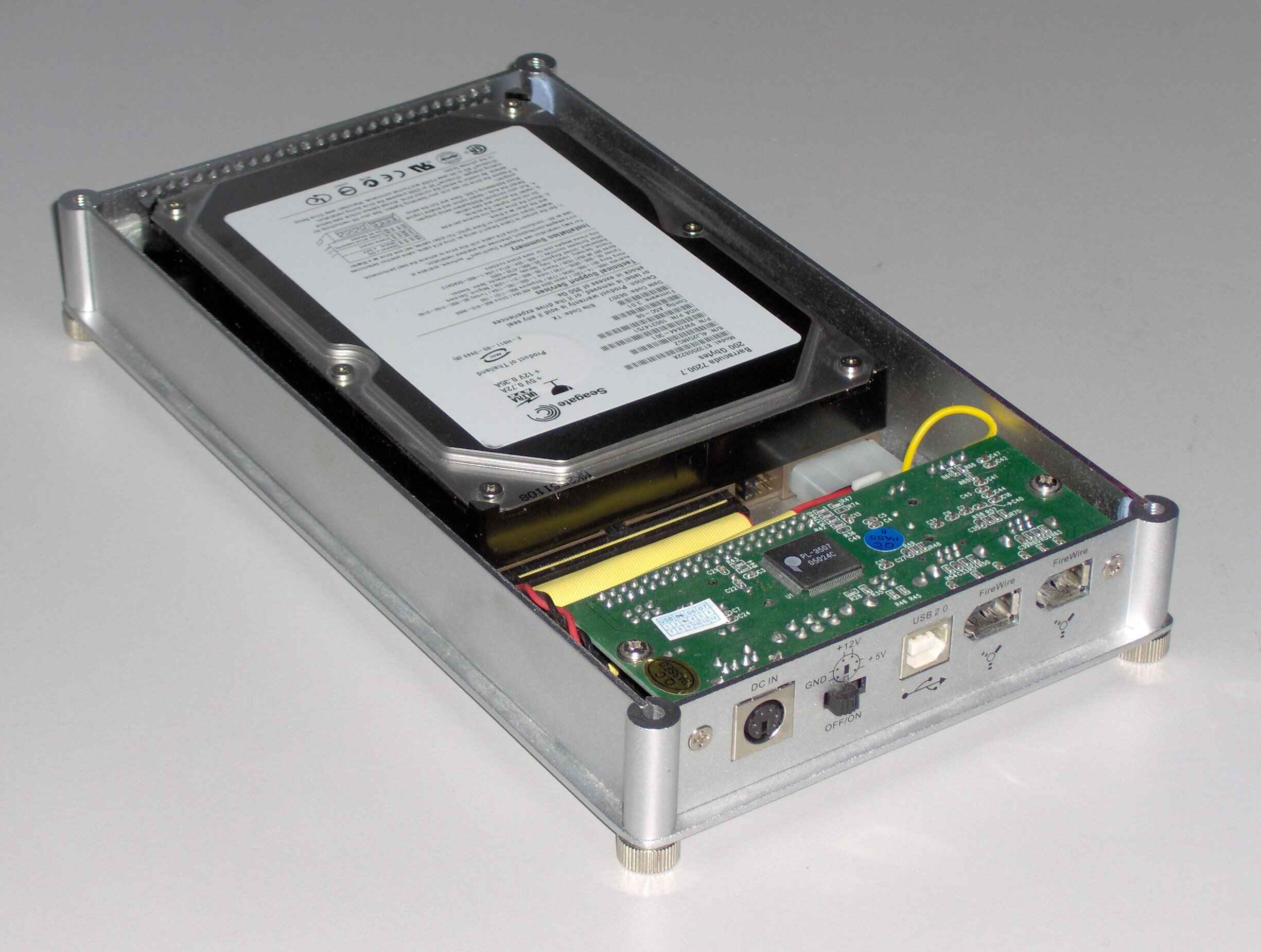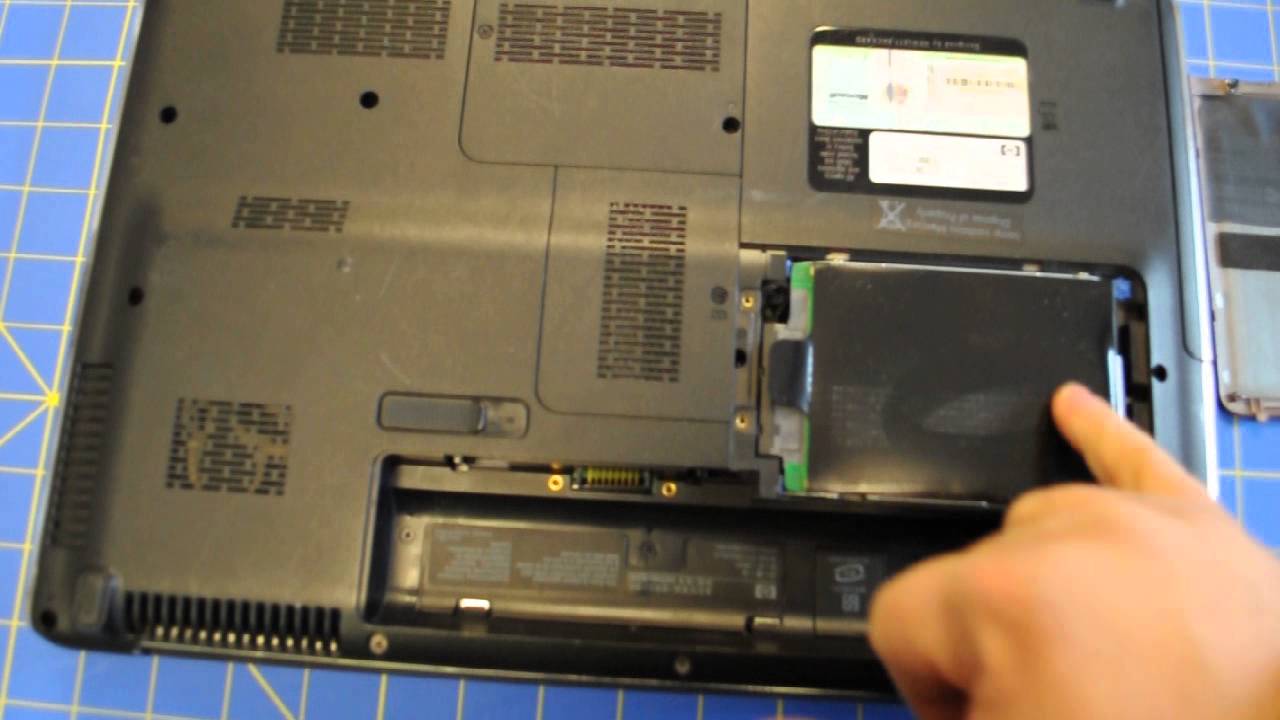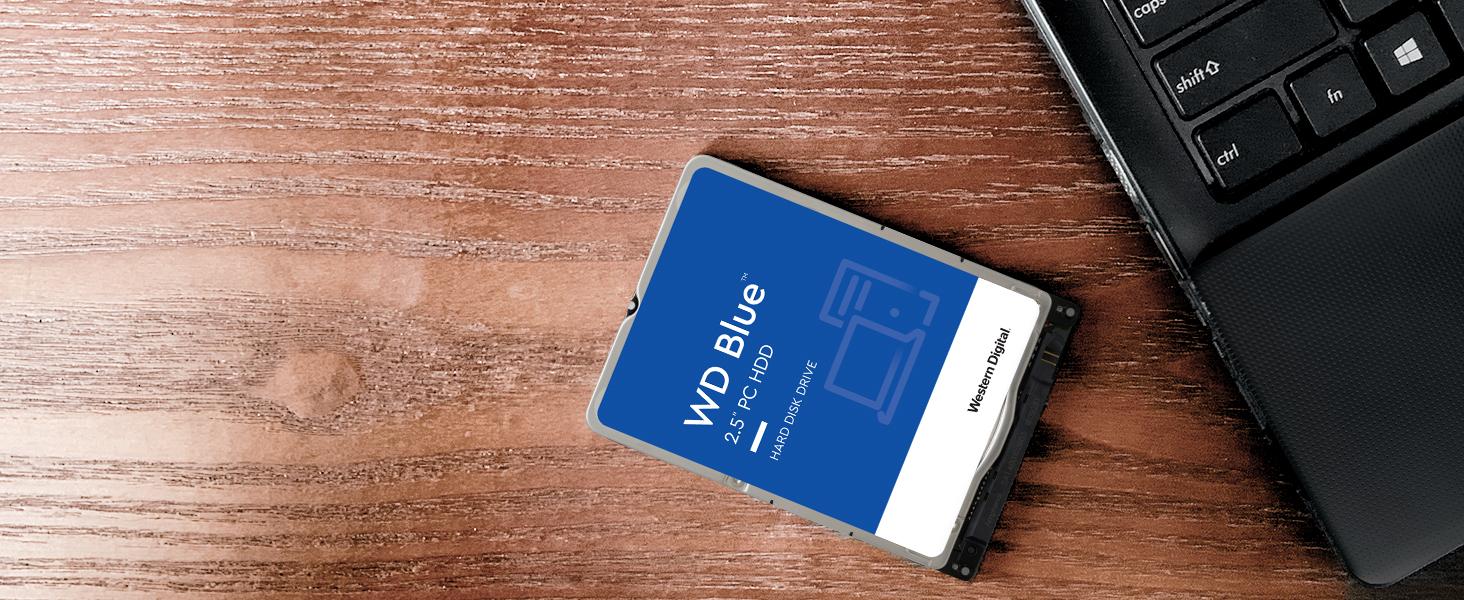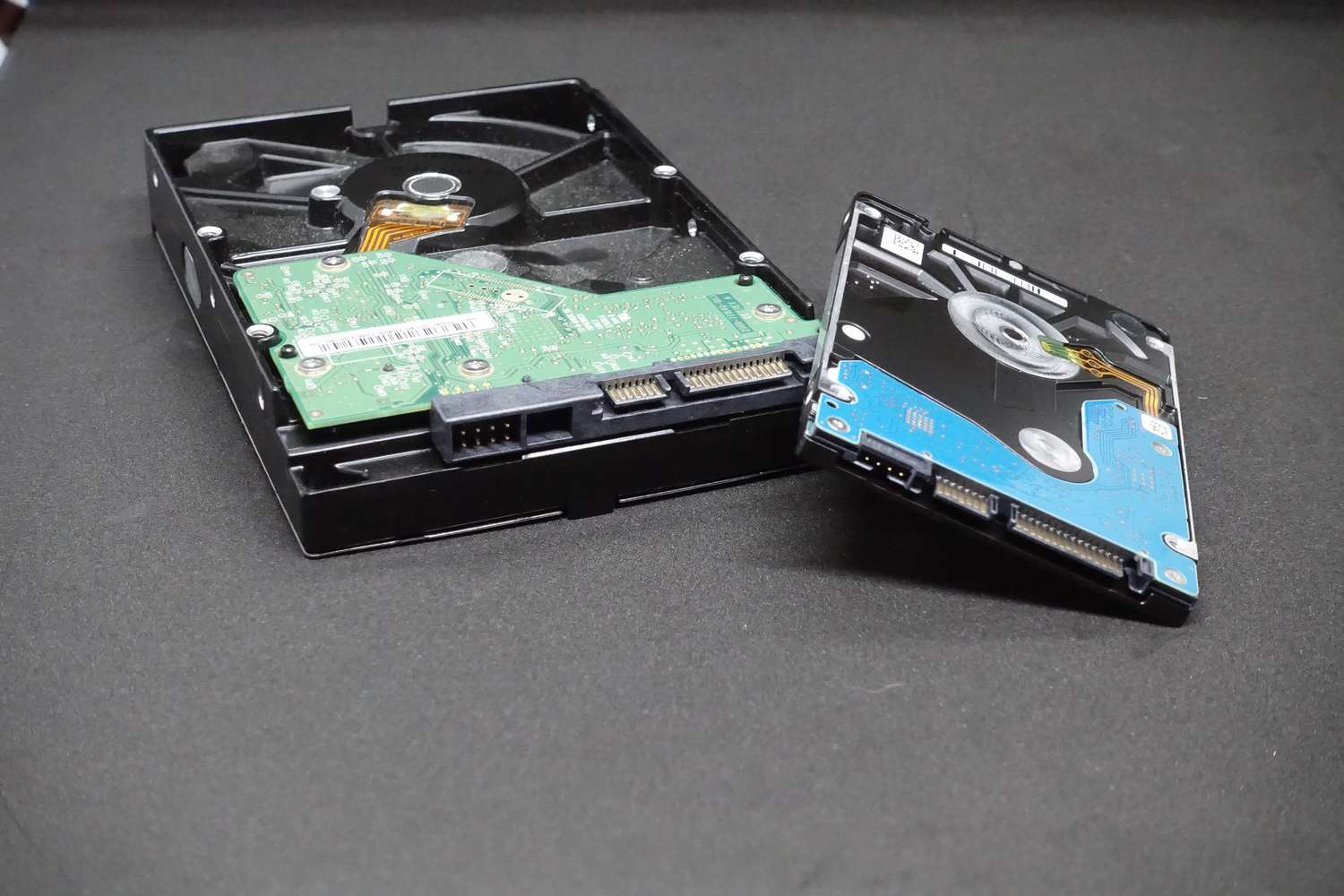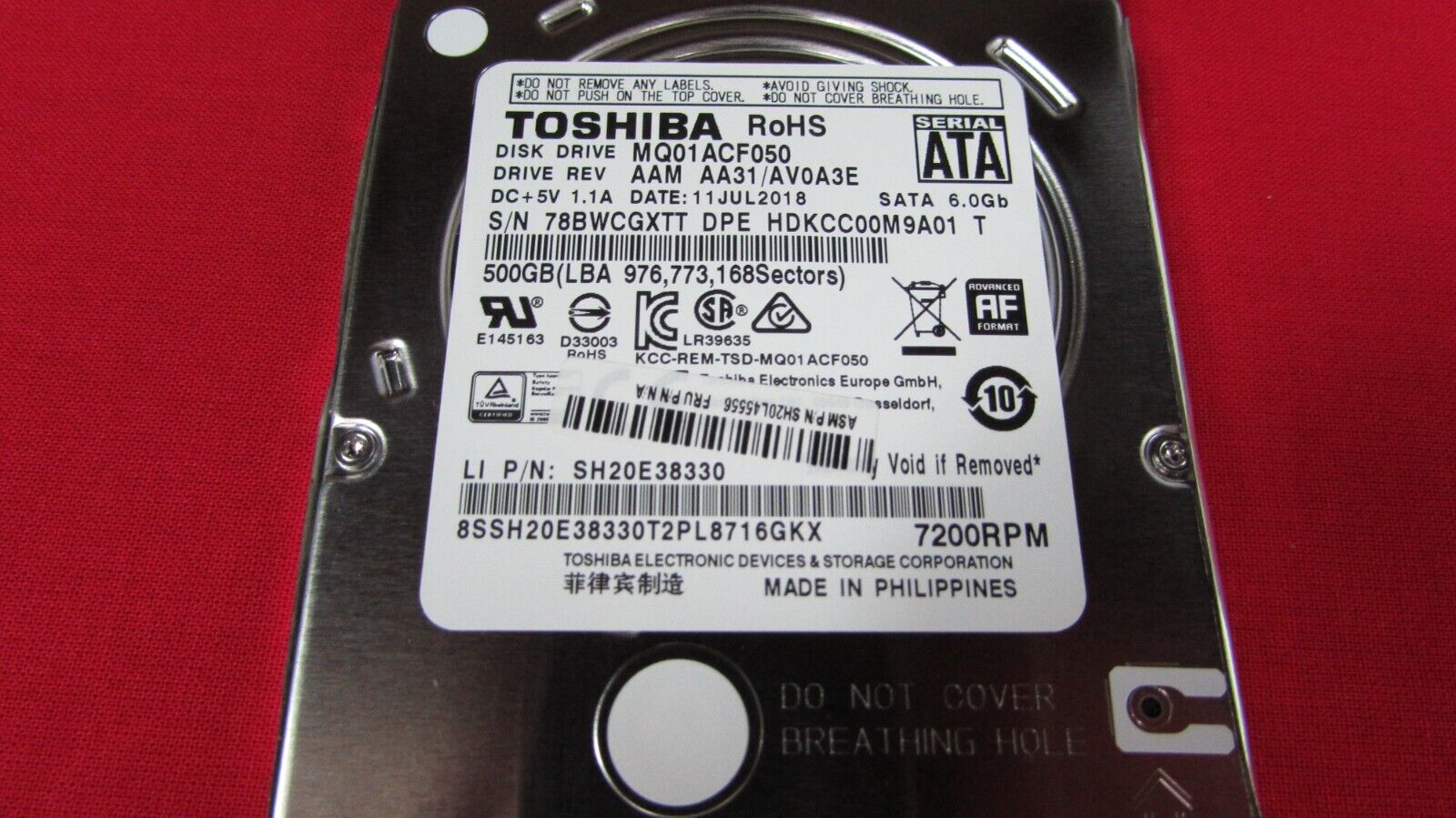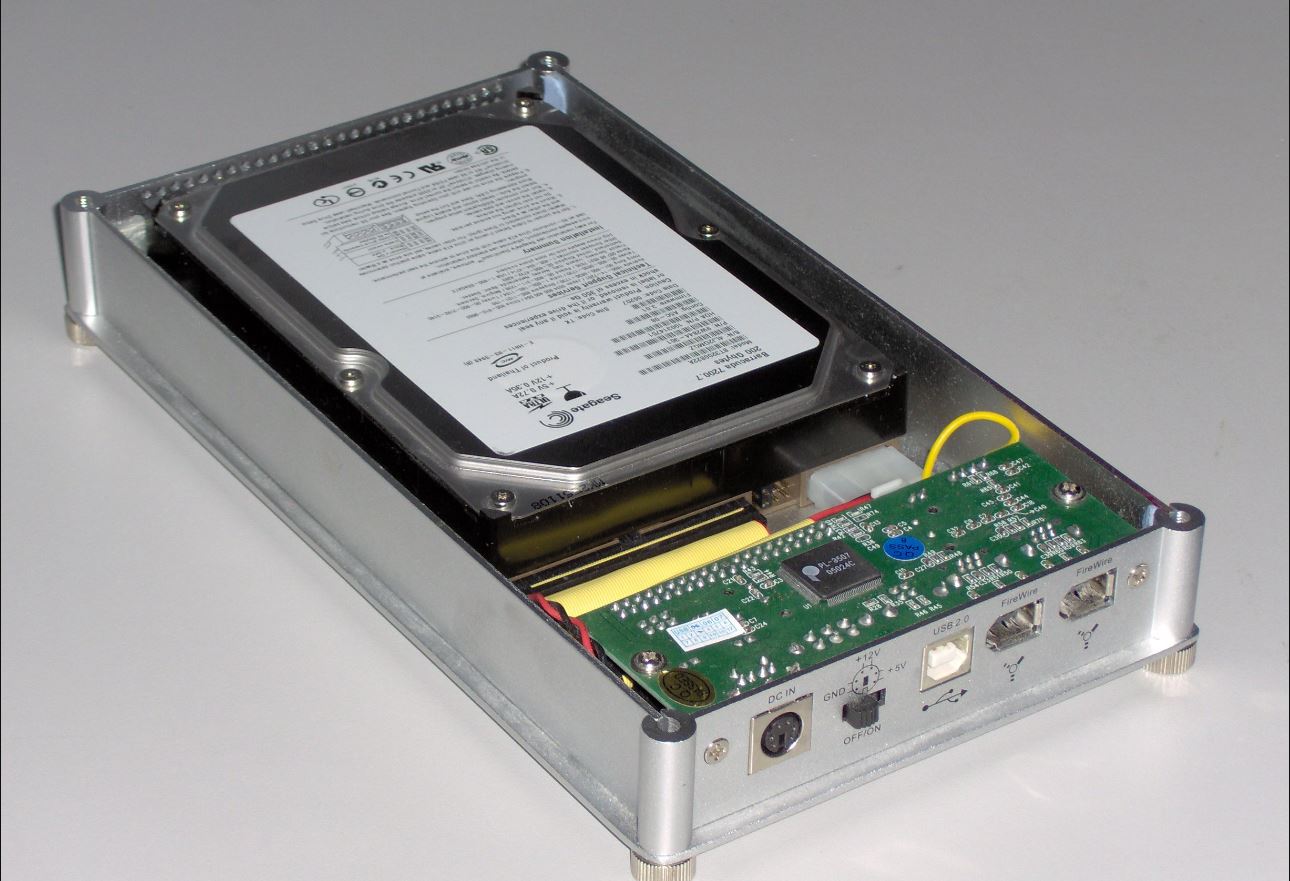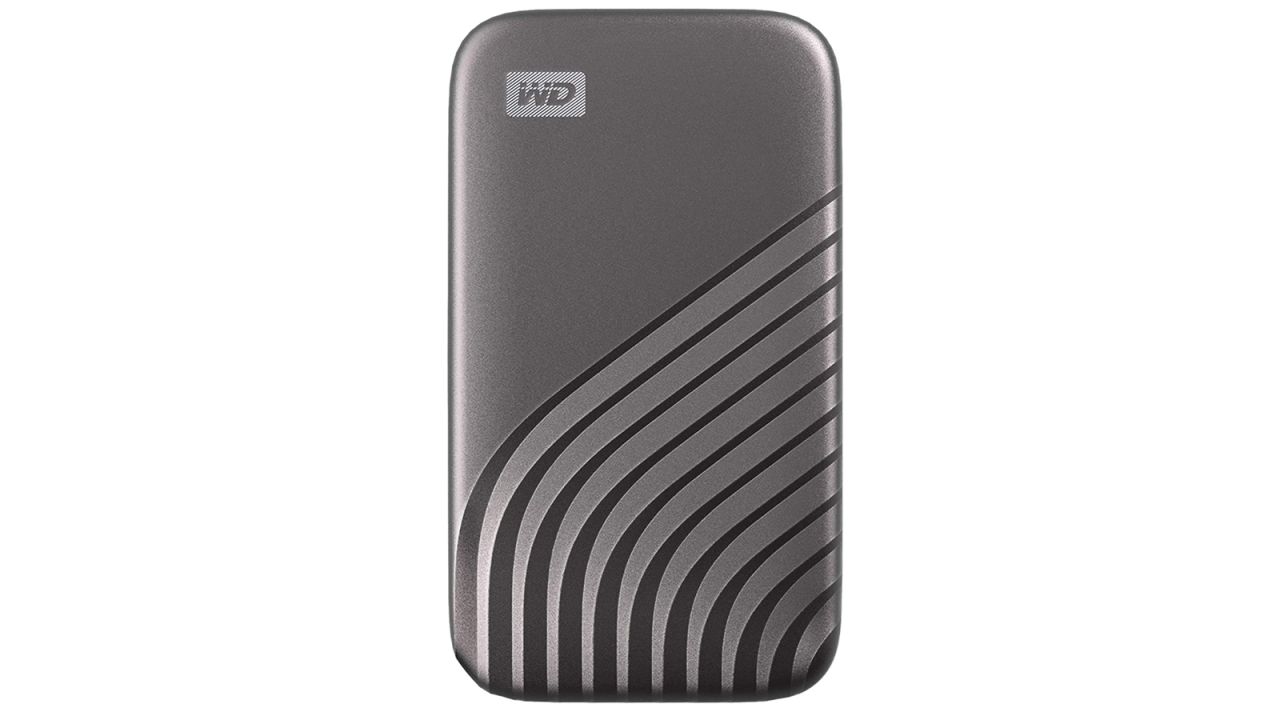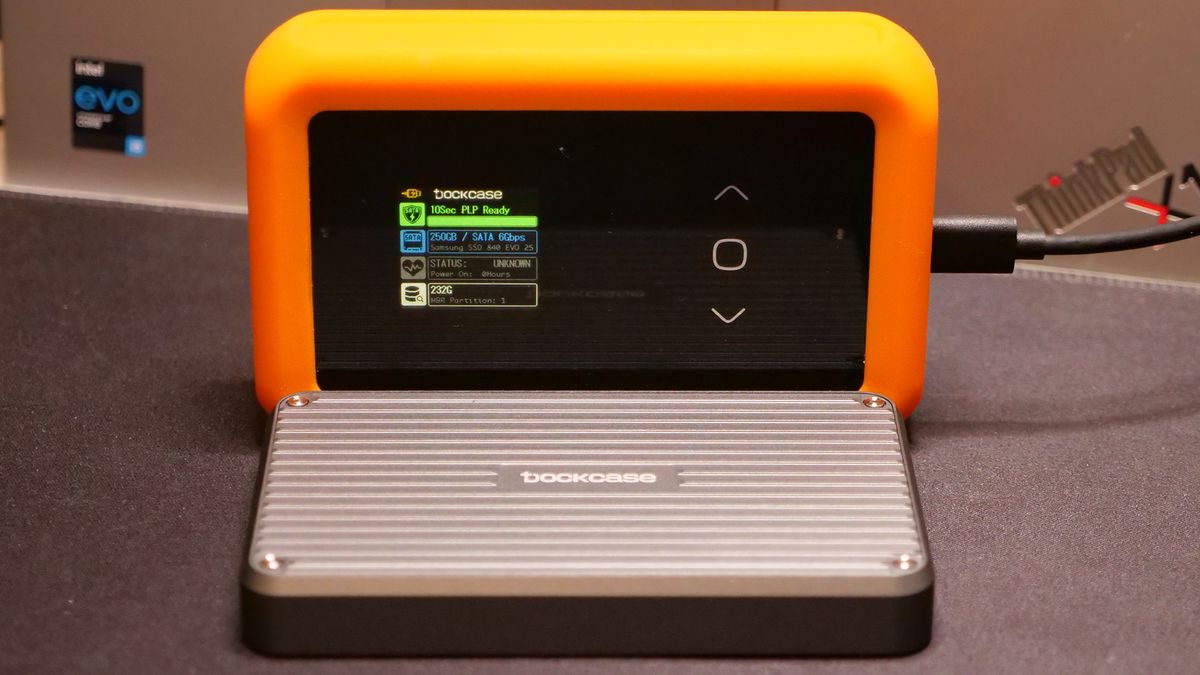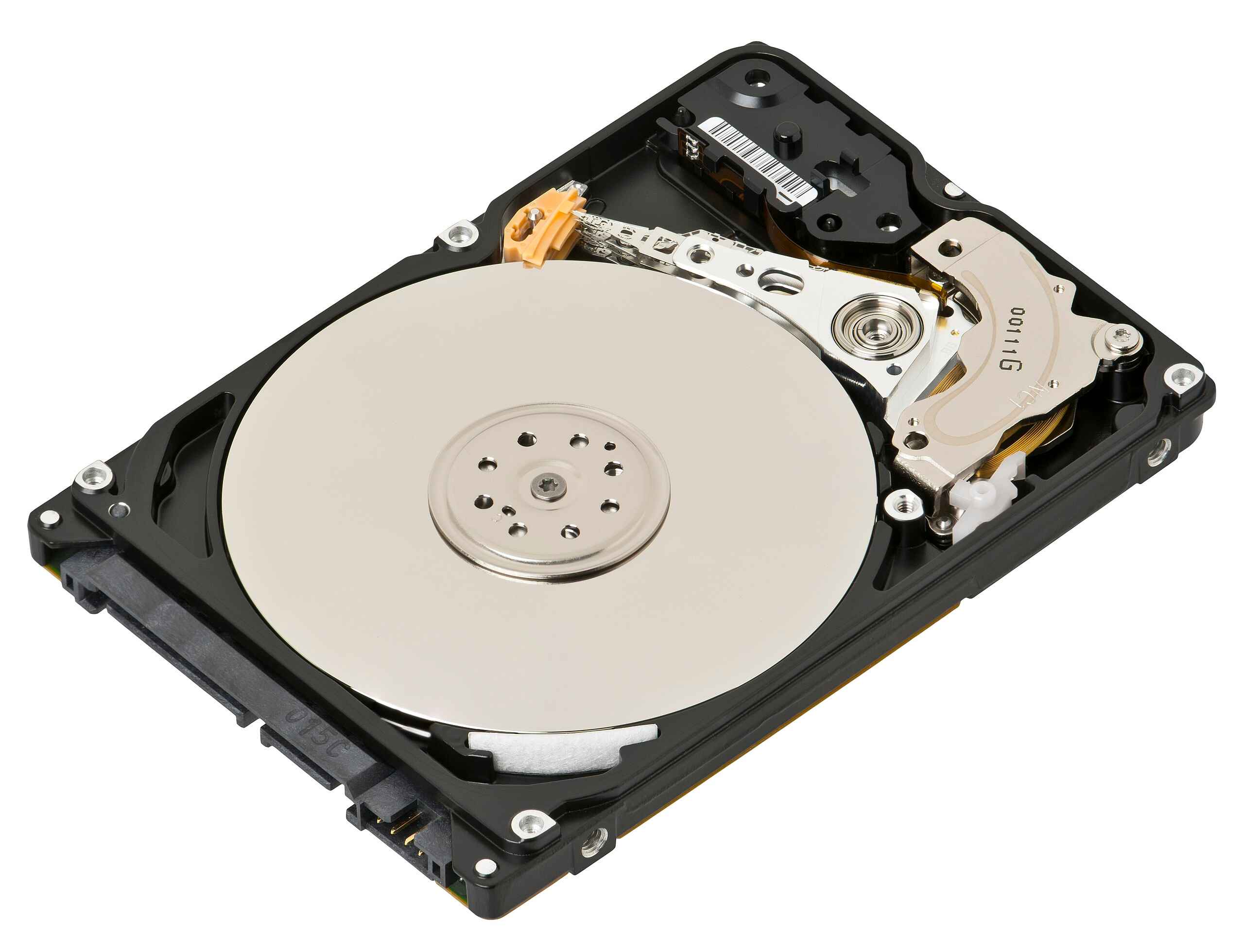What Is a Hard Disk Drive Enclosure?
A hard disk drive enclosure, commonly referred to as an HDD enclosure or external hard drive enclosure, is a device that allows you to connect and use an internal hard disk drive externally. It is essentially a protective casing that houses the hard drive and provides a connection interface to connect it to other devices, such as computers, laptops, or gaming consoles.
Hard disk drive enclosures come in various forms and sizes, but they typically feature a sturdy outer casing, a power supply unit, and a connection port. The casing protects the hard drive from physical damage and provides ventilation to dissipate heat during operation. The power supply unit supplies the necessary power to the hard drive, ensuring it functions properly. The connection port enables the enclosure to be easily connected to devices via USB, Thunderbolt, eSATA, or other interfaces.
The primary purpose of using a hard disk drive enclosure is to convert an internal hard drive into an external storage device. This allows you to easily add additional storage capacity to your computer or transfer data between different devices. Whether you have spare hard drives lying around or want to expand your storage options, an HDD enclosure provides a convenient and cost-effective solution.
Additionally, hard disk drive enclosures provide mobility and versatility. Since the enclosed hard drive can be easily disconnected and reconnected to different devices, it enables you to take your data with you wherever you go. You can bring important documents, multimedia files, or backups to meetings, presentations, or when traveling, without the need to carry an entire desktop or bulky external hard drives.
Furthermore, some hard disk drive enclosures offer additional features such as hardware encryption, RAID configurations, or built-in cooling fans to further enhance data security, performance, and reliability.
In summary, a hard disk drive enclosure is a practical and useful device that allows you to harness the power of internal hard drives externally, providing extra storage capacity, data portability, and convenience. Whether you need to expand your storage options, create backups, or carry your data on the go, an HDD enclosure is an essential accessory for any tech-savvy individual or professional.
Why Do You Need a Hard Disk Drive Enclosure?
A hard disk drive enclosure serves as a valuable tool for individuals and businesses alike. Whether you’re a casual user or a professional, here are a few reasons why you might need a hard disk drive enclosure:
- Expand Storage Capacity: If your computer or laptop is running out of storage space, a hard disk drive enclosure provides a quick and simple solution. By converting an internal hard drive into an external one, you can easily add extra storage capacity without the need to replace or upgrade your existing hard drive.
- Data Backup and Recovery: Having a reliable backup system is crucial to safeguard your valuable files and documents. An HDD enclosure allows you to create backups of important data on a separate hard drive. In the event of a computer failure or data loss, you can easily recover your files from the backup drive housed within the enclosure.
- Data Mobility: With a hard disk drive enclosure, you can easily transfer large files and media between devices. Whether you need to share files with colleagues, bring multimedia content to a friend’s house, or move data between different computers, the portability of an external hard drive is unmatched.
- Upgrade Flexibility: Upgrading your computer’s internal hard drive can be a hassle and time-consuming. By using an enclosure, you can swap out and upgrade hard drives quickly and easily. This is particularly useful for individuals who require high-performance storage solutions or frequently work with large amounts of data.
- Data Security: Hard disk drive enclosures can offer additional security features, such as hardware encryption, to protect sensitive data. This ensures that your information remains secure even if the external hard drive is lost or stolen.
Overall, whether you need to expand storage, create backups, transfer data, or enhance data security, a hard disk drive enclosure provides a versatile and practical solution. It offers the flexibility to use internal hard drives externally, giving you more control and convenience over your data storage and management.
Types of Hard Disk Drive Enclosures
There are various types of hard disk drive enclosures available on the market. Understanding the different types can help you choose the one that best suits your needs. Here are some common types of hard disk drive enclosures:
- USB Enclosures: USB enclosures are the most common and widely used type of enclosure. They feature a USB connection port that allows you to connect the enclosure to your computer or other devices. USB enclosures are known for their universal compatibility and ease of use.
- eSATA Enclosures: eSATA enclosures utilize the eSATA interface, which offers faster data transfer speeds compared to USB. These enclosures are ideal for users who require high-performance external storage solutions, such as gaming enthusiasts, video editors, or professionals working with large files.
- Thunderbolt Enclosures: Thunderbolt enclosures are designed for users who demand lightning-fast data transfer speeds. Thunderbolt technology offers unparalleled performance and is commonly used by professionals working in creative fields, such as photography, videography, or graphic design.
- Network Attached Storage (NAS) Enclosures: NAS enclosures are designed for multiple users to access and share files over a network. They typically feature Ethernet ports for connecting to a router or switch, allowing for file sharing and remote access from various devices.
- RAID Enclosures: RAID enclosures offer redundant storage and data protection through different RAID configurations. They are suitable for users who require enhanced data security and increased performance. RAID enclosures can be configured in various ways, such as RAID 0 for performance, RAID 1 for mirroring, or RAID 5 for a balance of performance and redundancy.
When choosing a hard disk drive enclosure, it is essential to consider your specific requirements, such as data transfer speeds, capacity, connectivity options, and budget. Additionally, ensure compatibility with your device’s interface (e.g., USB, eSATA, Thunderbolt) to ensure seamless connectivity and optimal performance.
By understanding the different types of hard disk drive enclosures, you can make an informed decision and select the one that best fits your needs and usage scenarios. Whether you require simplicity and universal compatibility or high-performance and advanced features, there is a hard disk drive enclosure available to cater to your requirements.
How to Choose the Right Hard Disk Drive Enclosure
Choosing the right hard disk drive (HDD) enclosure is essential to ensure optimal performance and compatibility for your specific needs. Here are some key factors to consider when selecting a hard disk drive enclosure:
- Compatibility: First and foremost, ensure that the enclosure is compatible with your hard drive. Check the supported size (e.g., 2.5-inch or 3.5-inch) and interface (e.g., SATA) of your hard drive and verify that it matches the specifications of the enclosure.
- Interface: Consider the interface options of the enclosure and choose one that is compatible with your computer or device. The most common interfaces are USB, eSATA, and Thunderbolt. USB enclosures offer universal compatibility, while eSATA and Thunderbolt provide faster data transfer speeds for high-performance requirements.
- Data Transfer Speed: If you frequently work with large files or require fast data transfer, opt for an enclosure that supports higher data transfer speeds. Look for enclosures that support USB 3.0 or higher, eSATA, or Thunderbolt interfaces to ensure efficient file transfers.
- Build Quality: Consider the build quality of the enclosure to ensure proper protection and durability for your hard drive. Look for enclosures made from sturdy materials such as aluminum or high-quality plastic, which can provide better heat dissipation and minimize the risk of physical damage.
- Power Supply: Check the power supply options of the enclosure. Some enclosures are powered by the computer’s USB port, while others require an external power adapter. If you plan on using larger capacity hard drives or need enhanced performance, opt for an enclosure with an external power supply to ensure sufficient power delivery.
- Additional Features: Consider any additional features that may be beneficial to your specific needs. This could include built-in cooling fans for improved heat dissipation, hardware encryption for enhanced data security, or support for RAID configurations for data redundancy.
- Price: Finally, consider your budget when selecting a hard disk drive enclosure. Enclosures range in price depending on the features, build quality, and brand. Determine the features that are necessary for your needs and find a balance between performance and cost-effectiveness.
By carefully considering these factors, you can choose a hard disk drive enclosure that meets your specific requirements, ensuring compatibility, performance, and longevity for your external storage solution.
How to Install a Hard Disk Drive into an Enclosure
Installing a hard disk drive (HDD) into an enclosure is a straightforward process that allows you to transform your internal drive into an external storage device. Here is a step-by-step guide on how to install a hard disk drive into an enclosure:
- Gather the necessary tools: You will need the hard disk drive, the enclosure, a screwdriver (typically Phillips-head or Torx), and any additional cables or accessories that come with the enclosure.
- Prepare the enclosure: Open the enclosure by removing any screws or latches that hold it together. Some enclosures may have a simple slide or snap design, while others require more screws to be removed.
- Prepare the hard drive: If you are using a brand new hard drive, remove it from its packaging. If you are repurposing an existing hard drive, ensure any data on it is backed up, as it may be formatted during the installation process.
- Connect the hard drive: Carefully slide the hard drive into the enclosure’s drive bay, aligning the connectors of the hard drive with the corresponding connectors inside the enclosure. Firmly push the hard drive into place until it is securely positioned.
- Secure the hard drive: Depending on the enclosure, you may need to use screws or other securing mechanisms to hold the hard drive in place. Follow the instructions provided with the enclosure to properly secure the hard drive, ensuring it does not move or shift during operation.
- Connect the cables: Connect the necessary cables between the hard drive and the enclosure. This typically includes data and power cables. Follow the specific instructions provided with the enclosure for proper cable connections.
- Assemble the enclosure: Once the hard drive is securely connected and the cables are properly attached, reassemble the enclosure by aligning the casing and securing any screws or latches that hold it together.
- Connect the enclosure to your device: Depending on the interface of the enclosure, connect it to your computer or device using the appropriate cable. Ensure a secure connection is established.
- Power on and initialize the drive: Power on your computer or device, and the connected enclosure should be recognized. Follow the necessary steps to initialize and format the newly installed hard drive according to your operating system’s instructions.
Once these steps are completed, your hard disk drive should be successfully installed into the enclosure and ready for use as an external storage device. Remember to handle the hard drive and enclosure with care and follow any specific instructions provided by the manufacturer to ensure a successful installation process.
Benefits of Using a Hard Disk Drive Enclosure
Using a hard disk drive (HDD) enclosure offers several advantages that can greatly enhance your storage and data management capabilities. Here are some key benefits of using a hard disk drive enclosure:
- Expand Storage Capacity: One of the primary benefits of using an HDD enclosure is the ability to expand your storage capacity. By converting an internal hard drive into an external one, you can easily add more storage space to your computer or device without the need for expensive hardware upgrades or replacements.
- Data Mobility: An HDD enclosure enables you to take your data with you wherever you go. Whether you need to bring important files to a meeting or transfer media content to a friend’s house, having your data stored on an external hard drive offers unmatched portability and convenience.
- Data Backup and Recovery: Having a reliable backup system is crucial to safeguard your important files and documents. With an HDD enclosure, you can easily create backups of your data on a separate hard drive. In case of computer failures or data loss, you can quickly recover your files from the backup drive housed within the enclosure.
- Easy Upgrades: Upgrading your computer’s internal hard drive can be a complex and time-consuming process. With an HDD enclosure, you can easily swap out and upgrade hard drives as needed. This is particularly beneficial for individuals who require high-performance storage solutions or work with large amounts of data regularly.
- Cost-Effective Solution: Using an HDD enclosure is a cost-effective way to utilize your internal hard drives externally. Instead of purchasing new external hard drives, you can repurpose spare internal drives you may already have, saving you money while still providing the additional storage space you need.
- Data Security: Some HDD enclosures offer additional security features, such as hardware encryption, to protect your sensitive data. By encrypting your files, you can ensure that even if the external hard drive is lost or stolen, unauthorized individuals won’t be able to access your confidential information.
Overall, using a hard disk drive enclosure provides numerous benefits, including expanded storage capacity, data mobility, backup and recovery options, easy upgrades, cost-effectiveness, and enhanced data security. Whether you’re a casual user needing extra storage space or a professional requiring reliable data management solutions, an HDD enclosure is a practical accessory that can significantly improve your storage capabilities.
Tips for Maintaining Your Hard Disk Drive Enclosure
Maintaining your hard disk drive (HDD) enclosure is essential to ensure its optimal performance, longevity, and the safety of your data. Here are some helpful tips for maintaining your HDD enclosure:
- Keep the Enclosure Clean: Regularly clean the enclosure to prevent dust and debris buildup. Use a soft, lint-free cloth to wipe the exterior and interior surfaces of the enclosure. Avoid using any liquid cleaners or abrasive materials that could damage the enclosure.
- Ensure Proper Ventilation: Adequate heat dissipation is essential to prevent overheating and potential damage to the hard drive. Make sure the enclosure has proper ventilation and is placed in a well-ventilated area. Avoid blocking the ventilation ports or placing the enclosure in confined spaces.
- Avoid Physical Shocks: Hard drives are sensitive to physical shocks and vibrations, which can cause data corruption or drive failure. Avoid dropping or mishandling the enclosure, and ensure it is securely placed in a stable position.
- Handle with Care: When connecting or disconnecting the enclosure from devices, ensure that you handle it with care to avoid damaging the connectors or ports. Gently insert or remove the connection cables without applying excessive force.
- Backup Your Data Regularly: Implement a regular backup routine to ensure the safety of your data. Create copies of essential files and store them on separate storage devices or in cloud storage. This protects your data in case of enclosure failure or other unforeseen circumstances.
- Monitor Drive Health: Keep an eye on the health of your hard drive within the enclosure. Use disk monitoring tools to check for any signs of degradation or impending failure. Address any issues promptly to prevent data loss and consider replacing the hard drive when necessary.
- Disconnect Properly: When disconnecting the enclosure from your computer or device, make sure to eject or safely remove the device from the operating system. This ensures that all pending read/write operations are completed, reducing the risk of data corruption.
- Keep Firmware Up to Date: Regularly check for firmware updates for your HDD enclosure. These updates often include bug fixes, performance improvements, and enhanced compatibility. Follow the manufacturer’s instructions to update the firmware safely.
- Handle Power Supply Carefully: If your enclosure requires an external power supply, handle the power cables with care. Avoid yanking or placing excessive strain on the cables, as this can damage the connectors or cause power disruptions to the hard drive.
By following these maintenance tips, you can ensure the proper functioning and longevity of your hard disk drive enclosure. Regular cleaning, proper ventilation, careful handling, regular backups, monitoring drive health, and keeping firmware up to date are key practices that contribute to a reliable and secure storage solution.
Frequently Asked Questions about Hard Disk Drive Enclosures
Here are some commonly asked questions and answers regarding hard disk drive (HDD) enclosures:
- What is a hard disk drive enclosure?
- What are the benefits of using an HDD enclosure?
- How do I choose the right HDD enclosure?
- How do I install a hard drive into an enclosure?
- Can I swap drives between different enclosures?
- Are HDD enclosures compatible with solid-state drives (SSDs)?
- Can I use multiple hard drives in a single enclosure?
- Are HDD enclosures plug-and-play?
A hard disk drive enclosure is a device that allows you to connect and use an internal hard drive externally. It provides a protective casing and connection interfaces to connect the enclosure to other devices.
Using an HDD enclosure allows you to expand storage capacity, enable data mobility, facilitate data backups, easily upgrade hard drives, and provide cost-effective storage solutions.
Consider factors such as compatibility, interface (e.g., USB, eSATA, Thunderbolt), data transfer speed, build quality, power supply options, additional features, and budget when selecting an HDD enclosure.
To install a hard drive, open the enclosure, slide the hard drive into the drive bay, connect the necessary cables, secure the hard drive, assemble the enclosure, and connect it to your computer or device.
In most cases, you can swap drives between different enclosures as long as they have compatible interfaces and form factors. However, it is important to ensure compatibility before attempting any swaps.
Yes, HDD enclosures are typically compatible with solid-state drives. However, make sure to check the enclosure specifications to ensure compatibility between the interface and form factor of the SSD.
Some HDD enclosures support multiple hard drives and offer RAID configurations for enhanced data storage and protection. However, check the enclosure specifications and manufacturer’s guidelines to confirm supported configurations.
Yes, HDD enclosures are generally designed to be plug-and-play. Simply connect the enclosure to your computer or device via the appropriate interface, and it should be recognized without the need for additional software or drivers.
These are a few of the most frequently asked questions about hard disk drive enclosures. If you have specific questions or concerns, it’s always best to consult the manufacturer’s documentation or customer support for more information.
Conclusion
Hard disk drive enclosures offer a wide range of benefits and flexibility for storing and managing data. Whether you need to expand your storage capacity, create backups, transfer files between devices, or upgrade your system, an HDD enclosure provides a practical solution. By converting an internal hard drive into an external storage device, you gain portability, convenience, and cost-effectiveness.
When choosing a hard disk drive enclosure, consider factors such as compatibility, interface options, data transfer speed, build quality, and additional features. This ensures that you select an enclosure that meets your specific needs and usage requirements.
Proper maintenance of your HDD enclosure is crucial in ensuring its optimal performance and longevity. Regularly clean the enclosure, provide proper ventilation, handle it with care, and perform regular backups to safeguard your data. Monitor the health of your hard drive and keep the enclosure’s firmware up to date to stay on top of potential issues.
In conclusion, a hard disk drive enclosure is a valuable tool that provides expanded storage, data mobility, backup options, upgradability, and data security. By utilizing an HDD enclosure, you can maximize the potential of your internal hard drives, enhance your data management capabilities, and enable seamless connectivity with other devices.







